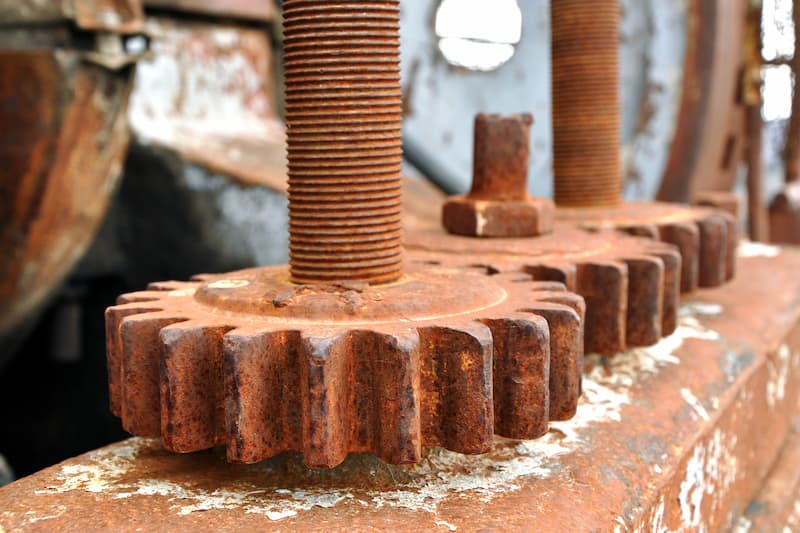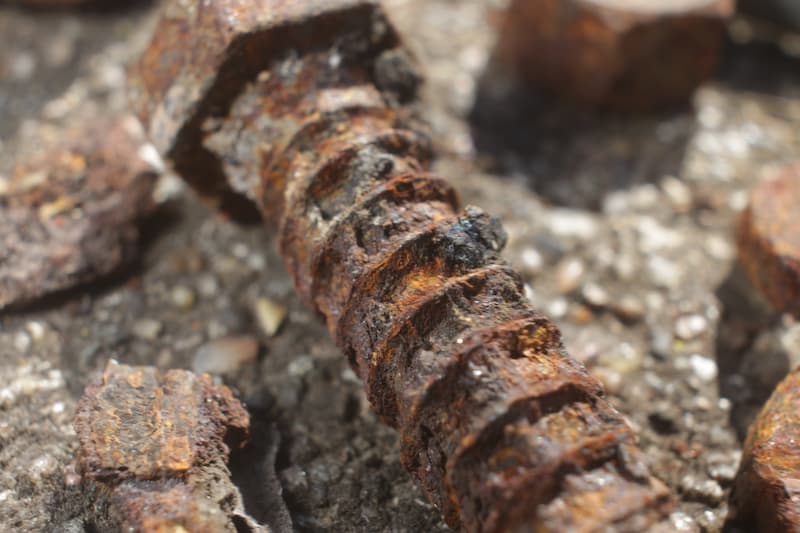No products in the cart.
Ultimate Rust Prevention Guide: Combat Rust and Corrosion with Effective Paints and Coatings
August 28, 2024
By Xion Lab
Free Shipping
easy returns
secure paymentS
FAQ | MY ACCOUNT | SUPPORT
August 28, 2024
By Xion Lab
Rust is a silent enemy that can weaken the structures we rely on every day. From cars to bridges, once rust starts its work, the integrity of these metal structures begins to fade. For businesses and individuals alike, understanding and implementing rust prevention is crucial. This article explores the significance of rust prevention, delving into what rust is, why it’s such a problem, and how we can combat it to save money and enhance safety.
Choosing the right rust prevention products and techniques is not only practical but also economical in the long run. By investing in quality coatings and inhibitors, you can protect your property and ensure that metal components perform efficiently for up to 2 years or more. Whether you’re dealing with a 1 gallon application or a quart for specific parts, rust prevention measures provide peace of mind and reliable corrosion protection.

Rust is the reddish-brown flaky coating that forms on iron or steel when it reacts with oxygen and moisture. This process is known as oxidation, a specific form of corrosion that primarily affects metals like iron and steel.
The Chemical Process of Rust Formation
Rust is the result of an electrochemical reaction between iron, oxygen, and moisture. When iron is exposed to water, it reacts with oxygen to form iron oxide, or rust. This process not only changes the appearance of the metal but also weakens it structurally.
Impact on Metal and Structures
Rust is more than just a cosmetic issue; it compromises the structural integrity of metal. Over time, rust can cause metal components to become brittle and break, leading to failures in machinery, vehicles, and infrastructure. For example, a rusty bridge can pose serious safety risks, requiring expensive repairs or replacements.
Welded joints and ferrous metals are especially susceptible to rust, so utilizing rust prevention measures, such as specialized anti-rust coatings, can prevent penetration of moisture and contaminants. This is crucial for maintaining the integrity of structures exposed to harsh conditions, such as blast environments or shipping containers.
Rust prevention isn’t just about keeping things looking nice. It has serious economic, safety, and environmental implications.
Economic Impact of Rust
Globally, rust causes billions of dollars in damages every year. The cost of replacing or repairing rusted components can be substantial for individuals and businesses. Preventative measures, although sometimes costly upfront, can save significant money in the long run by avoiding expensive repairs.
Safety Concerns
When metal structures rust, they become prone to failures that can endanger lives. Whether it’s a vehicle component or an industrial machine, rust can lead to catastrophic failures if not addressed. Ensuring rust prevention is part of regular maintenance can avert potential safety hazards.
Environmental Impact
Rust not only affects the materials it attacks but also has a wider environmental impact. The process of mining, refining, and manufacturing new metal components to replace rusted ones consumes resources and energy, contributing to pollution and environmental degradation.
While rust is a specific type of corrosion that affects iron and its alloys, corrosion can occur with other metals, each manifesting in different ways.

Corrosion vs. Rust
Corrosion is the broad term for the gradual destruction of materials (usually metals) through chemical reactions with their environment. Rust is a type of corrosion that specifically involves iron and oxygen. Understanding this distinction helps in choosing the right prevention strategies for different metals.
Types of Corrosion
There are several types of corrosion, each affecting metals in different environments:
Recognizing these types can help in diagnosing and preventing specific corrosion issues in various settings.
Understanding rust prevention is the first step toward maintaining the integrity of metal structures and components.
Overview of Rust Prevention
Rust prevention involves a combination of methods aimed at stopping the oxidation process before it starts. This includes protective coatings, the use of rust inhibitors, and regular maintenance practices.
Benefits of Rust Prevention
Implementing rust prevention techniques offers numerous advantages:
By understanding rust and its implications, we can take the necessary steps to protect our investments and ensure the safety and durability of metal structures.
Understanding how to prevent rust is essential for maintaining the integrity and longevity of metal structures and components. Several techniques can effectively combat rust formation and protect metals from corrosion.
Coating and Paints
Applying protective coatings and paints is one of the most common and effective methods to prevent rust. These coatings act as a barrier between the metal and the environment, preventing moisture and oxygen from reaching the metal surface.
Corrosion Inhibitors
Corrosion inhibitors are chemicals that, when added to a liquid or gas, decrease the corrosion rate of metals exposed to that environment. These inhibitors can be particularly useful in industrial applications where metals are exposed to corrosive substances.
Regular Maintenance and Inspection
Consistent maintenance and inspection are crucial for rust prevention. By regularly checking metal structures and components, you can identify early signs of rust and address them before they become major problems.
Non-drying coatings and topcoats are particularly useful for applications requiring long-lasting protection, such as firearms or intricate metal parts. These coatings not only protect but also lubricate to reduce friction and enhance performance. For large metal surfaces, a coating designed for a gallon size application can be more economical and efficient, reducing the need for frequent reapplication.
There is a wide range of products specifically designed to prevent rust. Selecting the right product depends on the specific application and environment.
Rust Preventative Coatings
Rust preventative coatings are specially formulated to protect metal surfaces from rust and corrosion. These products are often used in industrial settings, automotive applications, and for outdoor equipment.
Rust Inhibitor Sprays
Rust inhibitor sprays are convenient, ready-to-use solutions that provide quick protection against rust. They are often used for smaller items or areas that need frequent reapplication.
How Industrial Rust Prevention Differs from Consumer Products
Industrial rust prevention solutions are often more concentrated and designed to withstand extreme conditions compared to consumer-grade products. They are essential for protecting machinery and infrastructure in demanding environments.
Industries that rely on metal equipment, such as automotive and manufacturing, benefit significantly from rust prevention products. Vapor corrosion inhibitors and filters protect critical components from moisture, while acrylic coatings provide an additional layer of defense against environmental damage. Proper maintenance can help block rust in cavities, ensuring that even the most hidden parts are protected.
Selecting the most effective rust prevention method requires considering several factors, including the type of metal, environmental conditions, and cost.
Factors to Consider
Comparing Different Methods
Rust preventative kits provide a comprehensive solution for protecting metal surfaces. These kits often include a combination of coatings, sprays, and other tools needed for effective rust prevention.
Comprehensive Protection
Applications for Automotive and Outdoor Use
Popular rust prevention products include 2-in-1 rust converter. This product provide excellent protection for metal parts against rust and corrosion, and each has specific applications and benefits.
While it is challenging to stop rust and corrosion entirely, using preventative coatings and paint can significantly slow down their progression. These methods protect metal surfaces and provide long-term rust protection.
The frequency of applying rust preventative measures depends on environmental conditions and the type of metal. Regular inspections can help determine when reapplication is necessary to maintain optimal rust protection.
Not all metals are equally prone to rust and corrosion. Iron and steel require more protection, while metals like aluminum and stainless steel are more resistant. Proper rust prevention techniques ensure the longevity and safety of metal substrates.
Step-by-step Guide for Effective Application:
Rust prevention products for automotive use are available in various forms, including sprays, oils, and coatings. These products can be found in a rust store or online and are designed to provide rust protection for cars, trucks, and outdoor equipment. Look for products that displace moisture and create a protective seal on metal surfaces.
Rust prevention is crucial for maintaining the durability and safety of metal structures, whether they’re industrial machinery or automotive components. By understanding and applying the right techniques, you can significantly extend the lifespan of metal surfaces.
A coating designed to provide excellent protection can prevent corrosion for up to 1 year or more, depending on environmental conditions and the specific formula used. Options like anti-rust sprays and grease are effective for ensuring metal surfaces remain free of rust. Products available in gallon or quart sizes offer flexibility for both large-scale industrial applications and smaller, more specific needs.
In automotive applications, products that provide a topcoat layer of protection are essential for vehicles that undergo frequent pickup and delivery operations. For carbon steel and other metals, selecting a rust prevention product that offers both protection and lubrication is vital for reducing wear and tear.